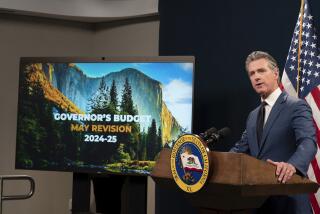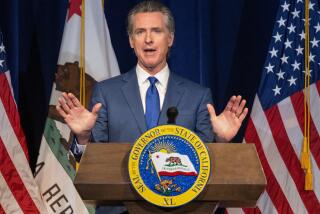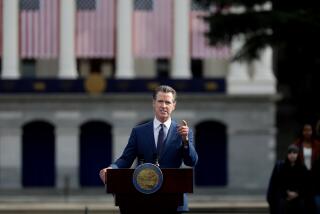THE ECONOMY: ADJUSTING TO NEW REALITIES : Post-Boom Budget : President’s Package Turns Focus to R&D;, Training for Future
- Share via
WASHINGTON — President Clinton’s budget contains a sober message to businesses in California and nationwide about what to expect from the federal government in these lean times. The handful of major government initiatives for business are geared to helping workers and companies find their way now that the big defense contracts of the 1980s are over.
Total federal spending for research and development would reach $71 billion in fiscal 1995, a rise of $2.5 billion, one of the biggest increases in any category of spending. Included in that is money to smooth the transition to increased civilian use of high-technology once used only by the military.
The budget offers money to help communities cope with military base closures. It also steps up spending for research that could spawn new civilian jobs and products from work done on aircraft, space vehicles and software for the defense establishment.
Despite the normally upbeat rhetoric typically found in every budget message, the President was frank about economic challenges: “Layoffs continue as a result of the restructuring taking place in American business and the end of the Cold War.”
Nowhere is this more apparent than in California. Although businesses in the state would benefit from a proposed increase in defense-conversion spending and boosts in other programs contained in the package, continued cutbacks in defense spending would tend to overshadow those gains.
Repeatedly, the budget comes back to the need to find uses for the skills and talents nurtured during the decades of booming defense spending.
“The end of the Cold War provides an opportunity to invest some defense industrial, technological and work force capabilities to contribute to our nation’s economic competitiveness; those who helped us win the Cold War can help us compete globally,” the budget document says.
A five-year program to spend $7 billion cuts across several federal agencies in an effort to make the transition to the post-Cold War era easier for companies, workers and communities. Lessons learned by NASA can help in developing improved civilian aircraft, the budget notes.
Computers and software produced by military research can be used by the Commerce Department in developing the so-called information highway.
The Administration’s intensive “push for information highways will create jobs as we extend our high-speed communications network to every classroom, clinic, hospital and library in America,” the document says.
“Other research and technology investments will also accelerate technological progress and employ scientific and technical workers--and help to re-employ workers from the downsizing defense sector,” it says.
For the majority of high school graduates who won’t be attending college, the Administration has proposed a new program to combine classroom work with apprenticeship training at job sites. Two Cabinet departments--Labor and Education--would collaborate in the effort.
MAIN STORY: A1
More to Read
Get the L.A. Times Politics newsletter
Deeply reported insights into legislation, politics and policy from Sacramento, Washington and beyond. In your inbox twice per week.
You may occasionally receive promotional content from the Los Angeles Times.










